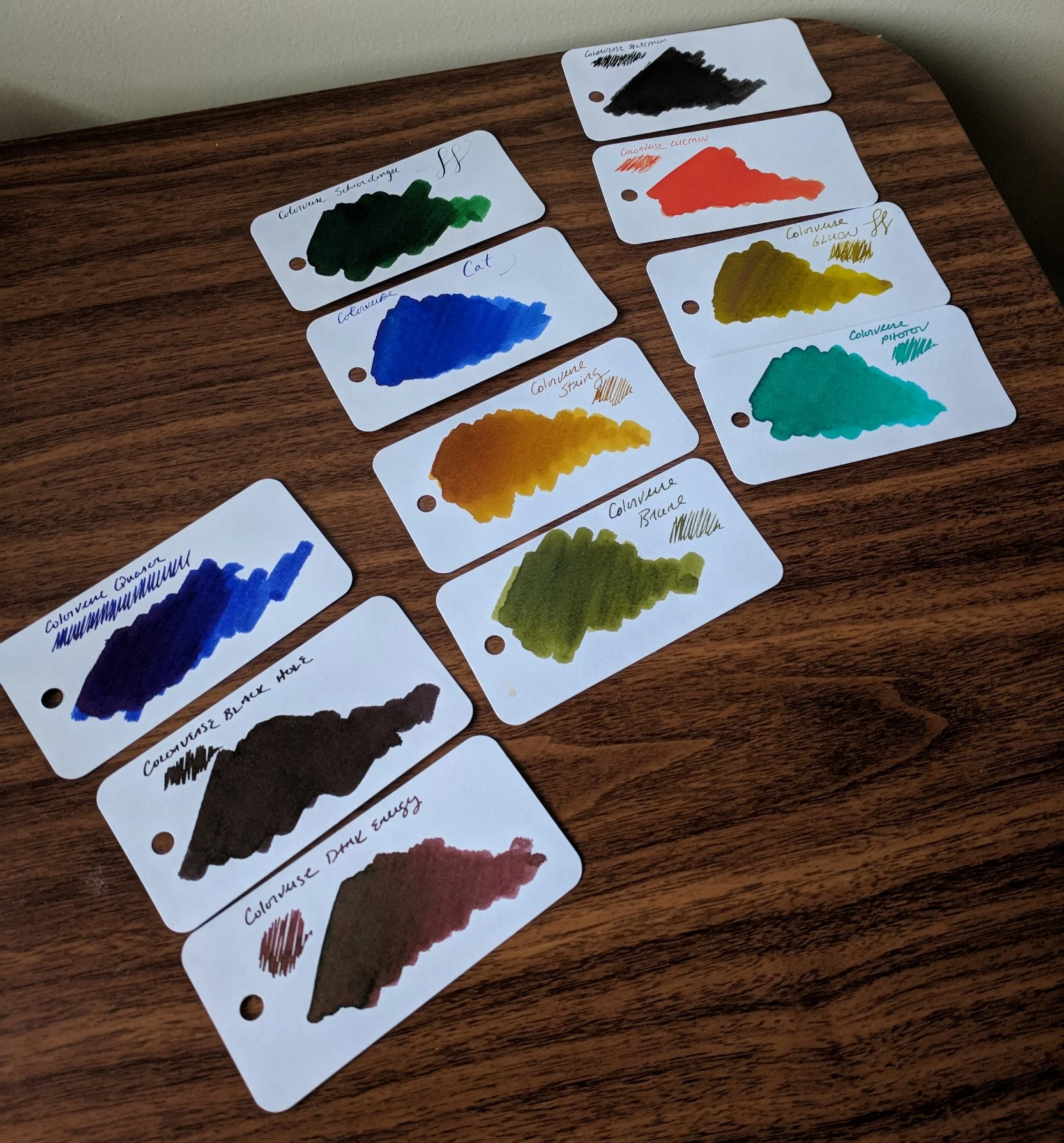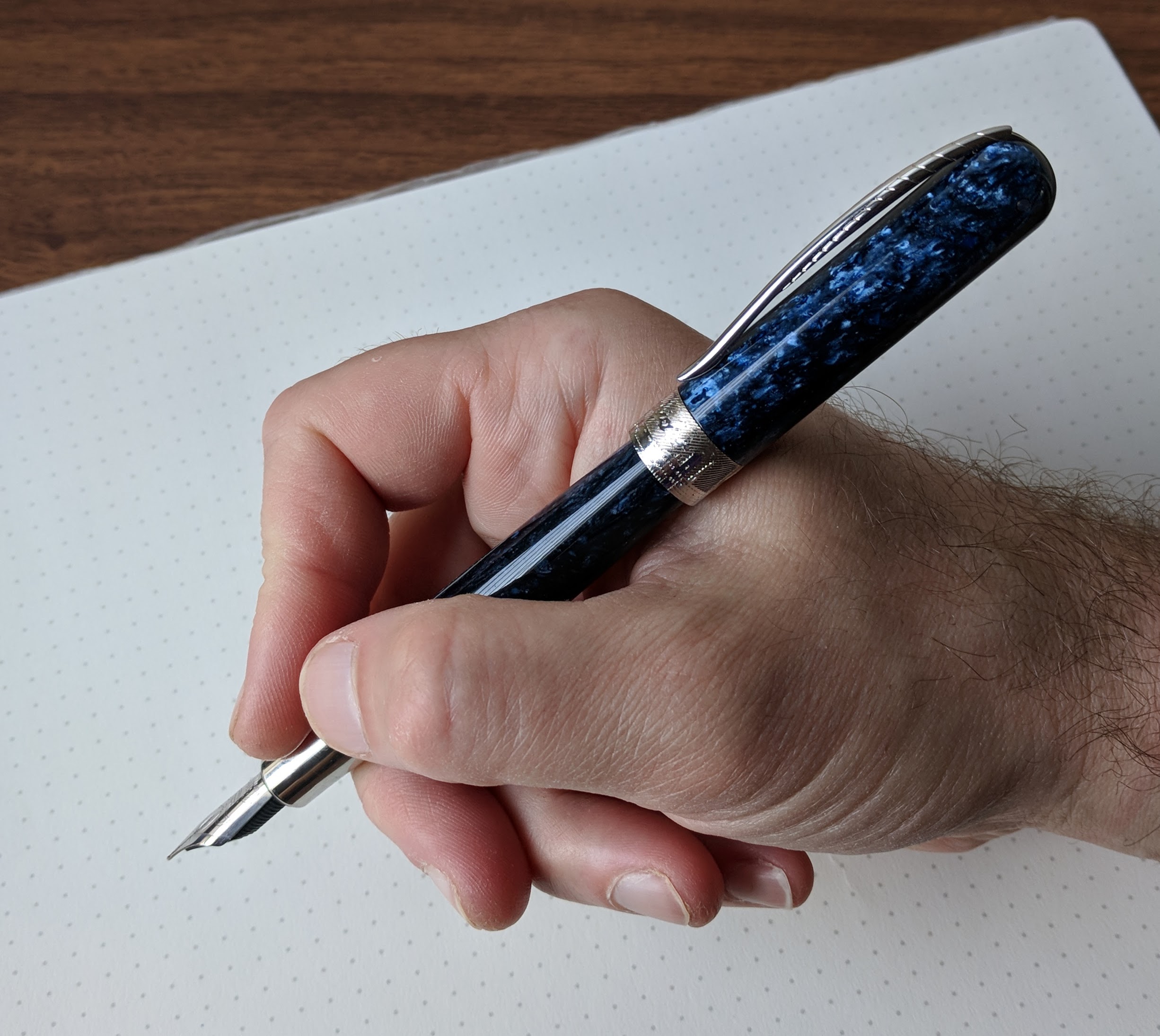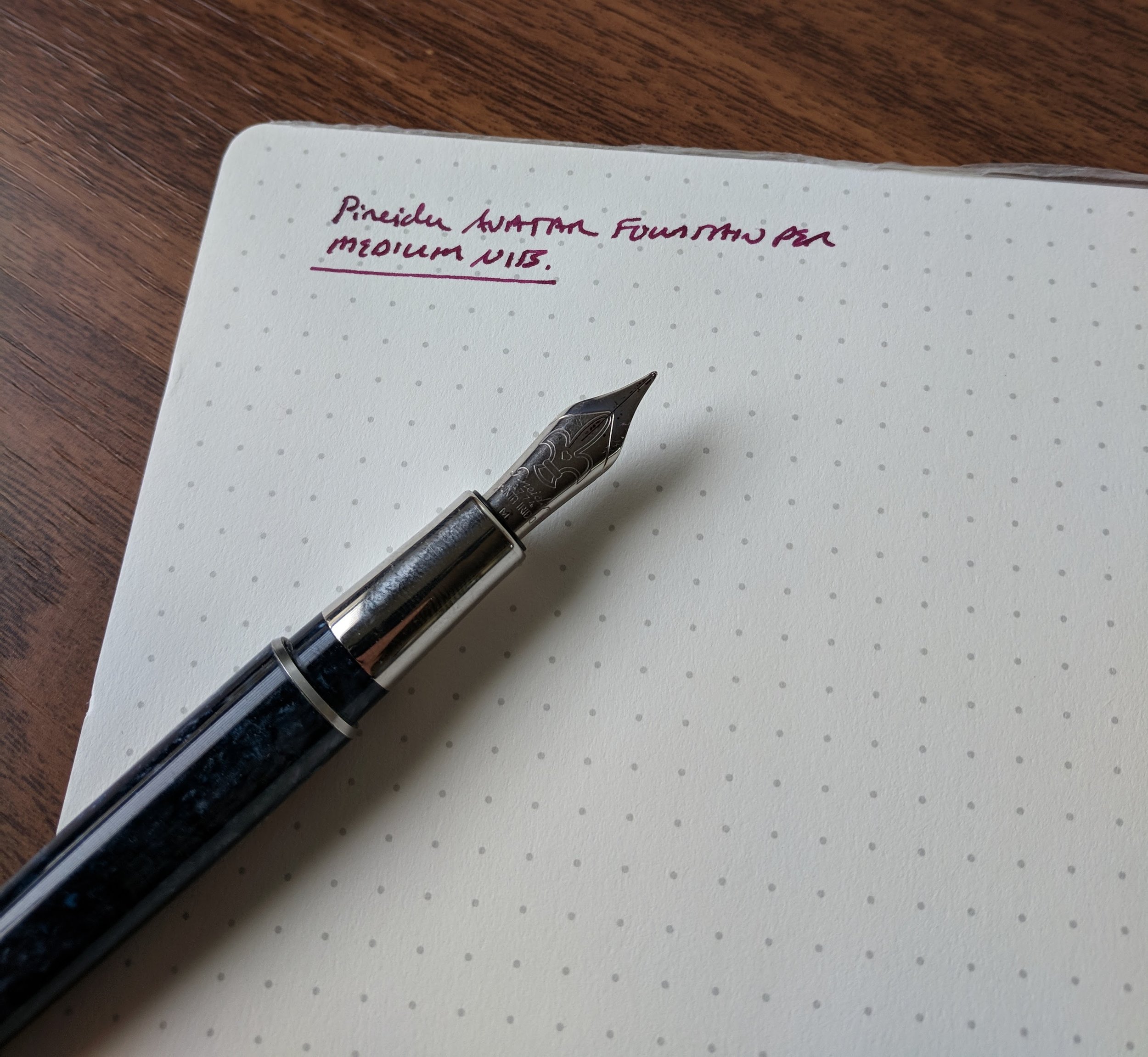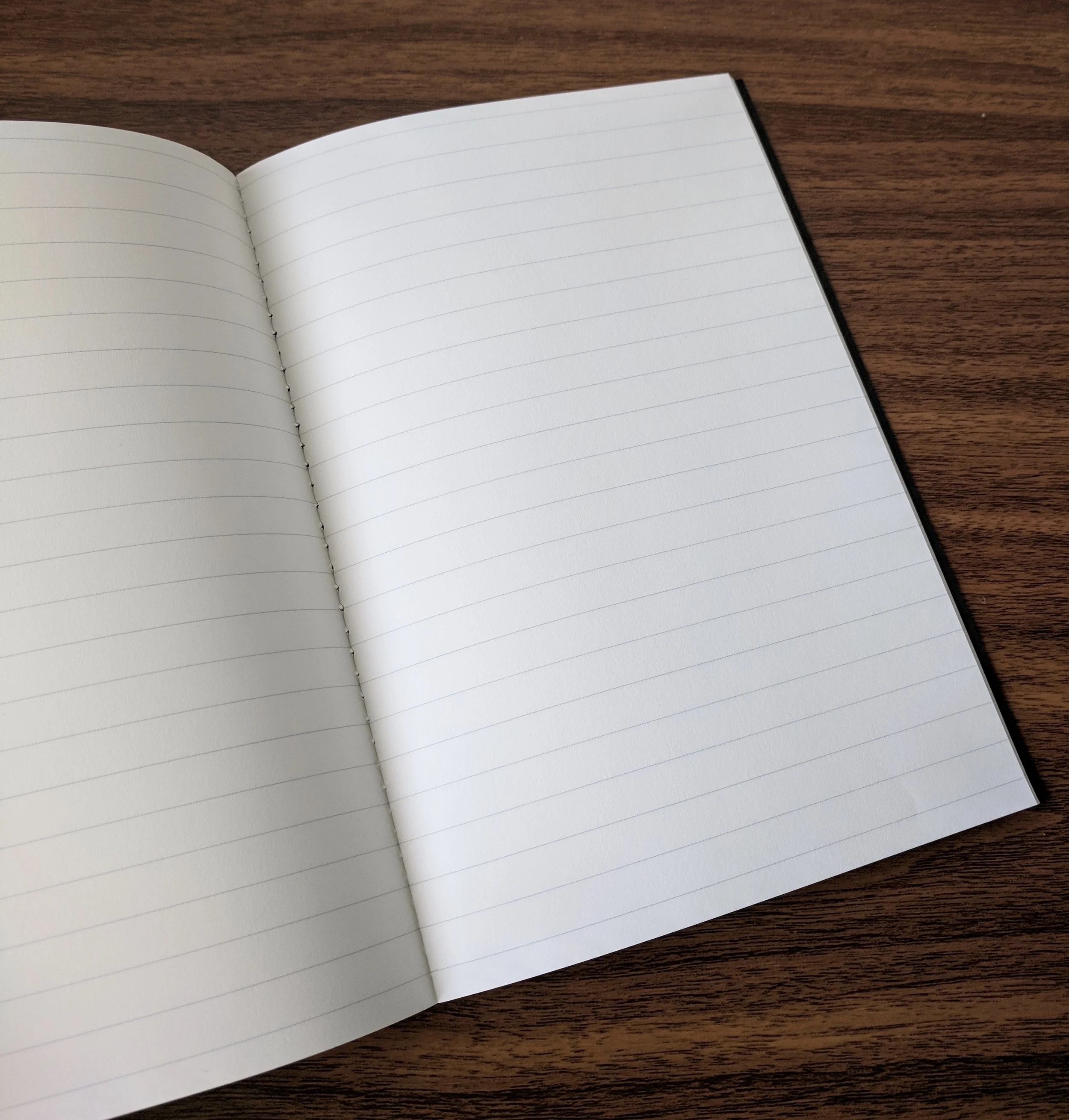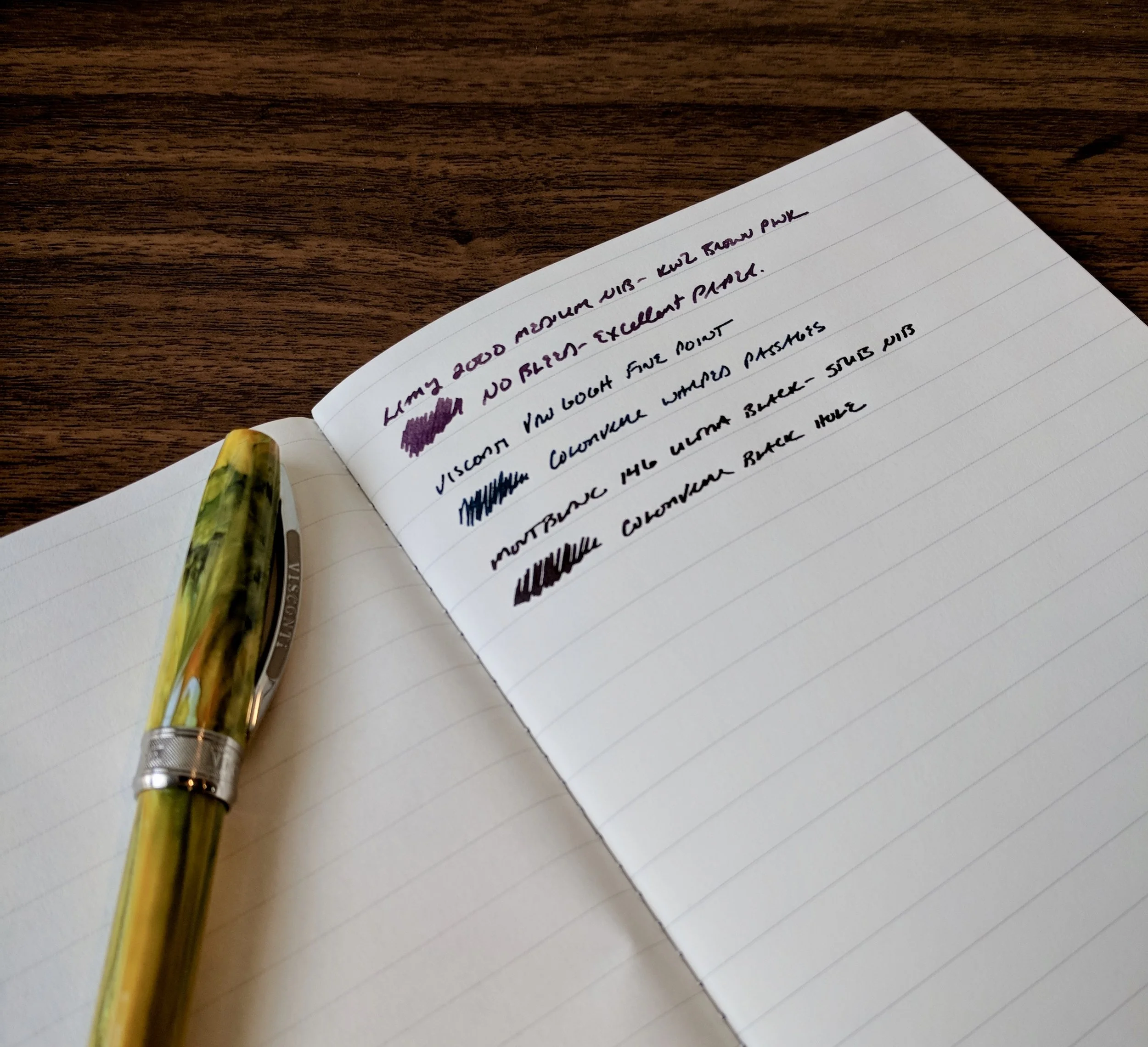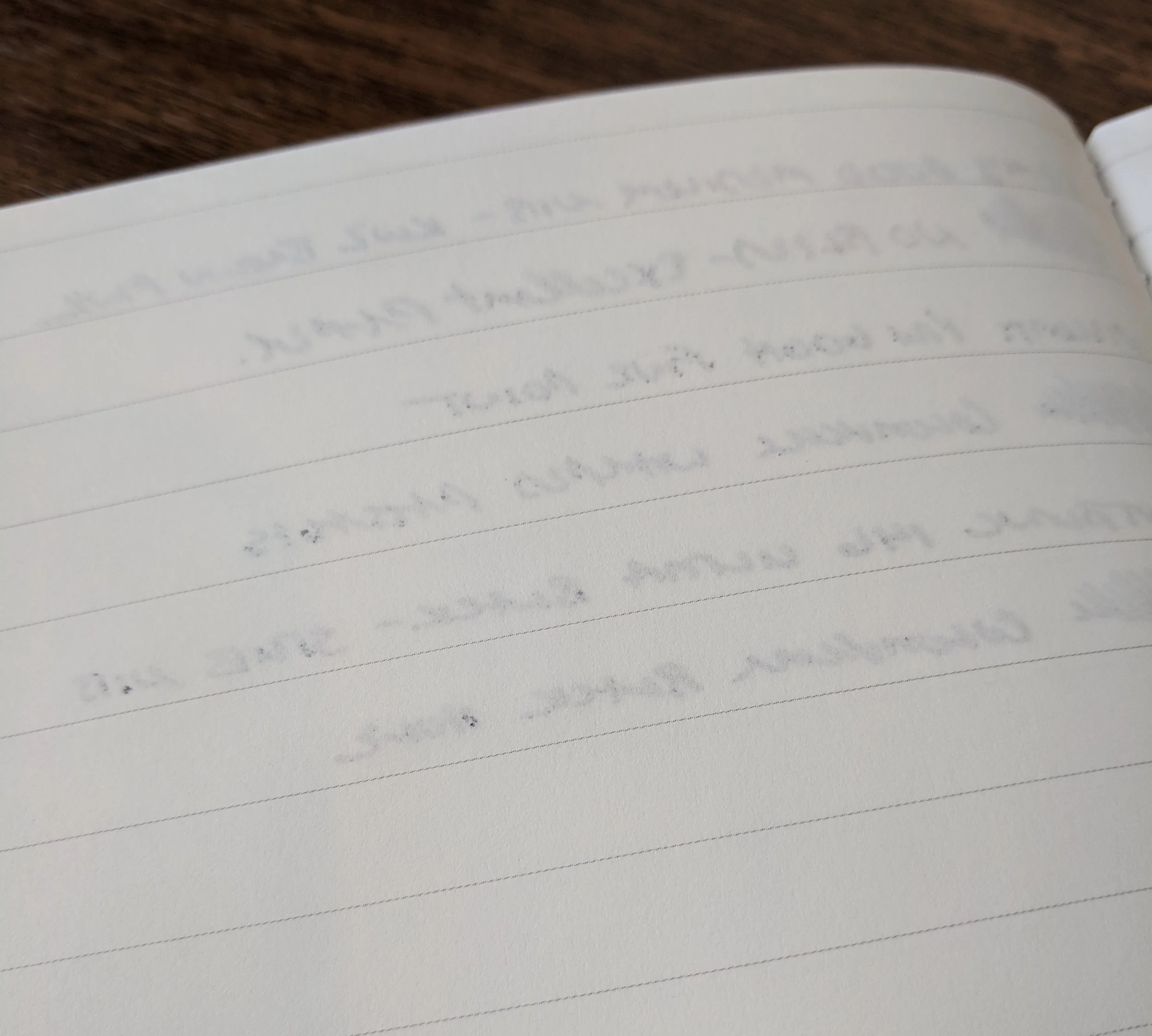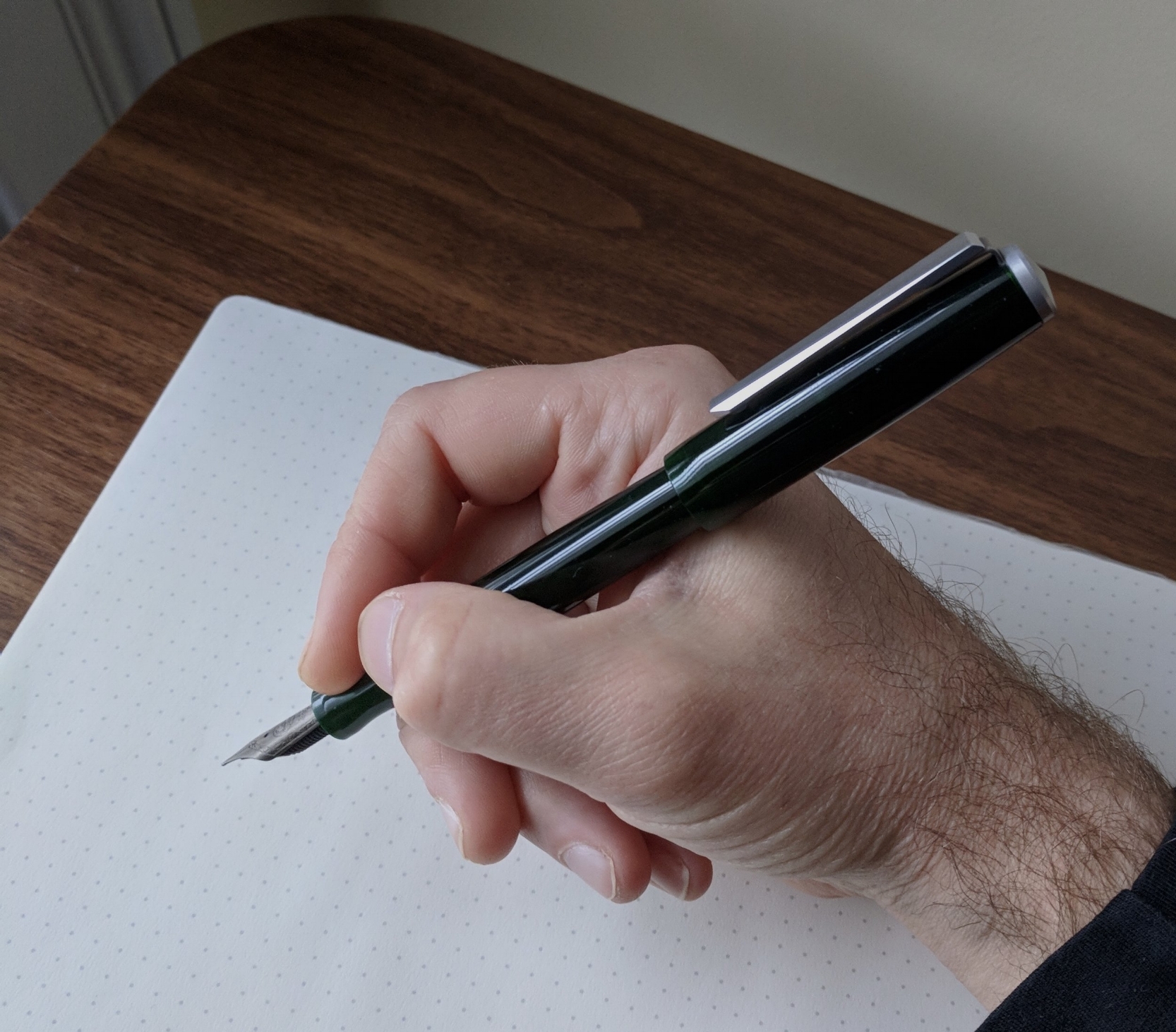Well, I'm back with another round of Colorverse inks for you. Up today is an ink, or rather, a set of inks, from Colorverse Season 3: Multiverse. For it's third "season," Colorverse released the inks in packs of two different colors, both featuring physics or space-themed names per the Company's usual practice. It's a cool idea, in that it gives you some variety within a single purchase, and also allows the company to play on some more complex themes. (I won't even try to explain the "Schrodinger/Cat" connection here. That's what Wikipedia is for.)
You can just see the shimmer in "Cat" at the edges of the swab.
There's not too much to say about these inks in addition to what I've already said about other Colorverse inks that I've reviewed. Both Schrodinger and Cat flow well, dry relatively quickly, and behave in the sense that they don't bleed or feather on decent paper, only becoming unusable for me on the cheapest recycled copy stock. Schrodinger is a mid-bright green, maybe slightly darker than Montblanc Irish Green, while Cat is a cobalt blue that "glistens" (i.e., shimmers). A note about Colorverse "shimmer inks": somewhat surprisingly, I like them! I find the glitter effect much more subtle than in the J. Herbin or Diamine offerings, and I had no issues with Colorverse Cat drying out in or clogging a pen. I've used it a fair bit, even at work.
I spent most of this review with Schrodinger loaded into my trusty Faber-Castell Loom, a pen I'm liking more and more as a daily writer.
One thing I like about Colorverse Cat (and most of the Colorverse glistening inks) is that it can pass as a "normal" ink for everyday writing. The "shimmer effect" is subtle and will likely only be noticeable in very wet nibs, unless you look pretty hard.
Takeaways and Where to Buy
While I like some better than others from an aesthetic perspective, I have not tried a "bad" Colorverse ink. For further reading, check out my earlier reviews of Colorverse Black Hole and Dark Energy, as well as my review of Colorverse Quasar.
Swabs of my current stash of Colorverse Inks.
Site sponsor Pen Chalet carries the full range of Colorverse inks, including Schrodinger/Cat. The inks cost $36 per two-pack of bottles - one 65ml bottle of Schrodinger and one 15ml bottle of Cat - for a total of 80ml of ink. While the cash outlay "per ink" isn't insignificant, given the volume you get in a box the price doesn't strike me as unreasonable (though of course opinions will vary on this).
Disclaimer: I purchased this ink from Pen Chalet using affiliate credit. I was not compensated monetarily for this review, though this post does contain affiliate links.
